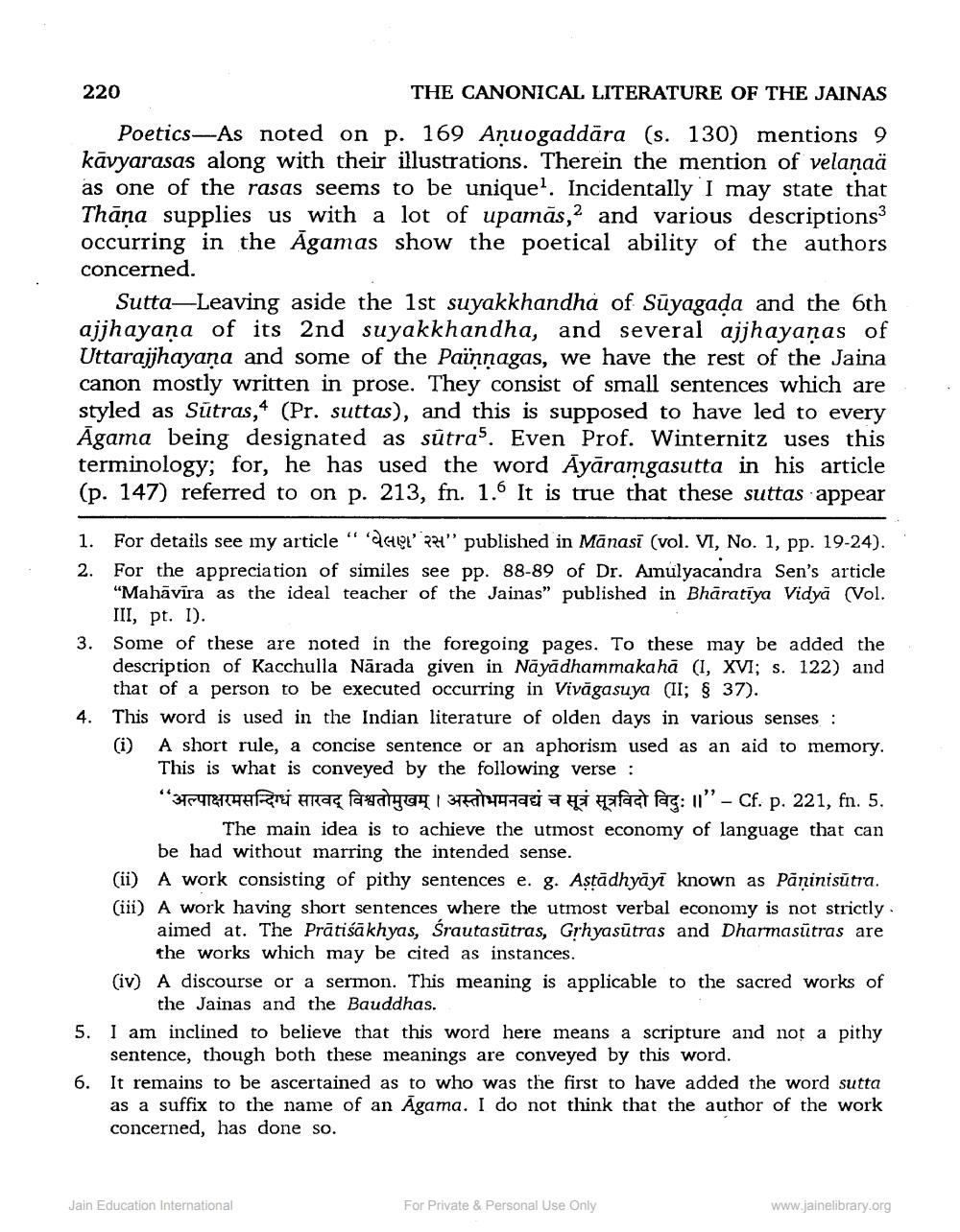________________
220
THE CANONICAL LITERATURE OF THE JAINAS Poetics-As noted on p. 169 Anuogaddāra (s. 130) mentions 9 kāvyarasas along with their illustrations. Therein the mention of velanaä as one of the rasas seems to be uniquel. Incidentally I may state that Thāna supplies us with a lot of upamās,2 and various descriptions occurring in the Agamas show the poetical ability of the authors concerned.
Sutta—Leaving aside the 1st suyakkhandha of Sūyagada and the 6th ajjhayana of its 2nd suyakkhandha, and several ajjhayanas of Uttarajjhayana and some of the Paiņņagas, we have the rest of the Jaina canon mostly written in prose. They consist of small sentences which are styled as Sūtras, 4 (Pr. suttas), and this is supposed to have led to every Agama being designated as sūtras. Even Prof. Winternitz uses this terminology; for, he has used the word Ayāramgasutta in his article (p. 147) referred to on p. 213, fn. 1. It is true that these suttas appear
1. For details see my article" AGHIOL 224" published in Mānasi (vol. VI, No. 1, pp. 19-24). 2. For the appreciation of similes see pp. 88-89 of Dr. Ainulyacandra Sen's article
"Mahāvīra as the ideal teacher of the Jainas" published in Bharatiya Vidya (Vol.
III, pt. I). 3. Some of these are noted in the foregoing pages. To these may be added the
description of Kacchulla Nārada given in Nāyādhammakahā (I, XVI; s. 122) and
that of a person to be executed occurring in Vivāgasuya (II; § 37). 4. This word is used in the Indian literature of olden days in various senses : (i) A short rule, a concise sentence or an aphorism used as an aid to memory.
This is what is conveyed by the following verse : "3769TERCHART Ara fanya I 3761149798i a PET afast fas: 11" - Cf. p. 221, fn. 5.
The main idea is to achieve the utmost economy of language that can be had without marring the intended sense. (ii) A work consisting of pithy sentences e. g. Astādhyāyi known as Pāņinisútra. (iii) A work having short sentences where the utmost verbal economy is not strictly
aimed at. The Prātiśākhyas, srautasūtras, Grhyasūtras and Dharmasūtras are
the works which may be cited as instances. (iv) A discourse or a sermon. This meaning is applicable to the sacred works of
the Jainas and the Bauddhas. 5. I am inclined to believe that this word here means a scripture and not a pithy
sentence, though both these meanings are conveyed by this word. It remains to be ascertained as to who was the first to have added the word sutta as a suffix to the name of an Agama. I do not think that the author of the work concerned, has done so.
Jain Education International
For Private & Personal Use Only
www.jainelibrary.org




